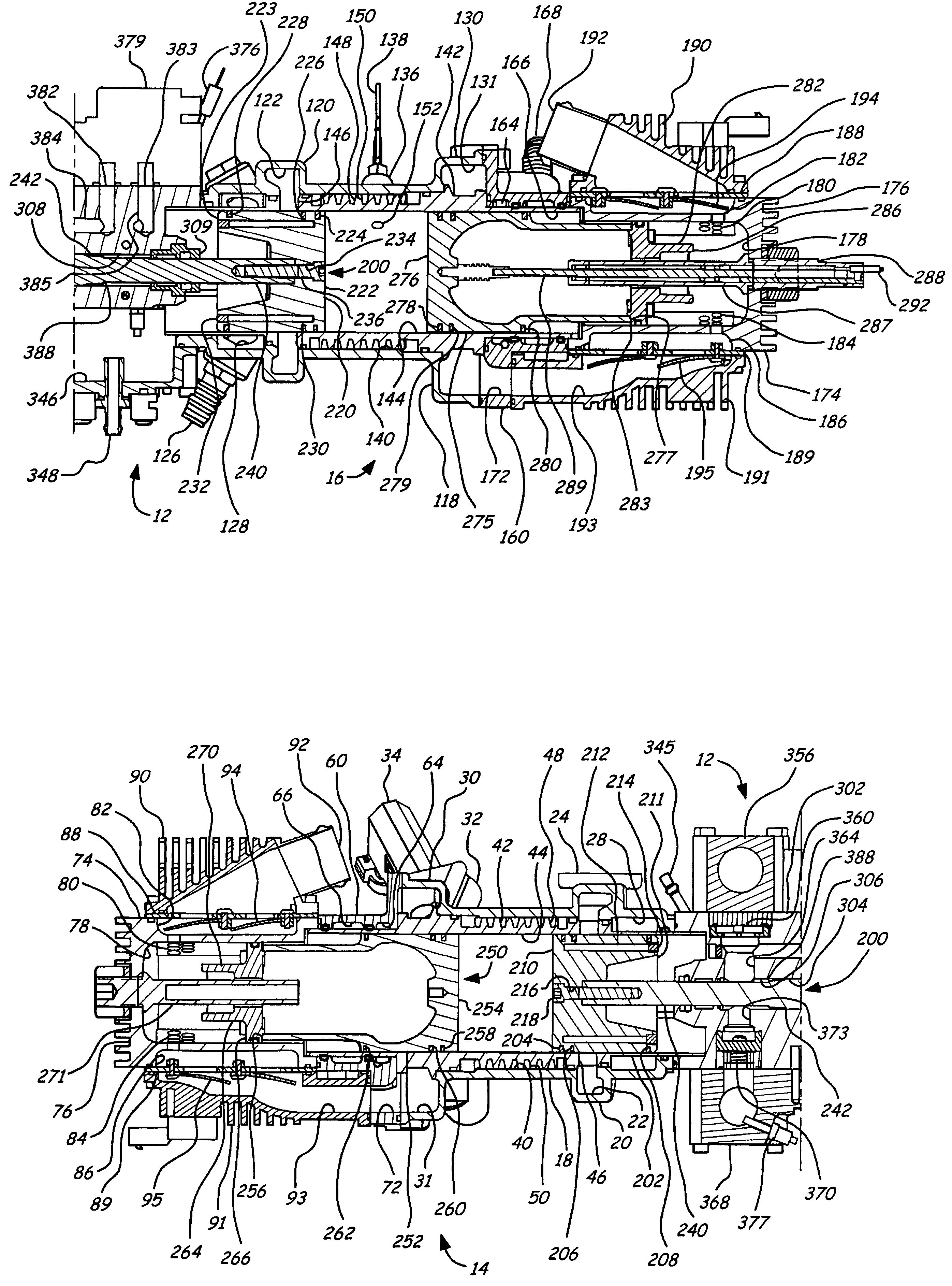Piston lubrication for a free piston engine
a free-piston, piston-based technology, applied in the direction of auxilaries, machines/engines, mechanical equipment, etc., can solve the problems of high friction, limited efficiency, and limited power density, and achieve the effect of easy variation of compression ratio, improved efficiency, and inherent ability
- Summary
- Abstract
- Description
- Claims
- Application Information
AI Technical Summary
Benefits of technology
Problems solved by technology
Method used
Image
Examples
Embodiment Construction
[0027]FIGS. 1–13 illustrate an opposed piston, opposed cylinder, hydraulic, free piston engine 10. The engine 10 includes a hydraulic pump block assembly 12, with a first piston / cylinder assembly 14 extending therefrom, and a second piston / cylinder assembly 16 extending from the hydraulic pump block assembly 12 in the opposite direction so they are in line. The timing of the first piston / cylinder assembly 14 is opposite to the timing of the second piston / cylinder assembly 16. Thus, when one is at top dead center, the other is at bottom dead center. Moreover, the motion is along or parallel to a single axis of motion. This configuration of free piston engine allows for a more inherently balanced engine.
[0028]Additionally, the following description discloses an engine that not only stores energy produced by the engine in the form of pressurized fluid, but also employs some of this pressurized fluid to start and, at times, assist in controlling the engine operation and maintaining the ...
PUM
 Login to View More
Login to View More Abstract
Description
Claims
Application Information
 Login to View More
Login to View More - R&D
- Intellectual Property
- Life Sciences
- Materials
- Tech Scout
- Unparalleled Data Quality
- Higher Quality Content
- 60% Fewer Hallucinations
Browse by: Latest US Patents, China's latest patents, Technical Efficacy Thesaurus, Application Domain, Technology Topic, Popular Technical Reports.
© 2025 PatSnap. All rights reserved.Legal|Privacy policy|Modern Slavery Act Transparency Statement|Sitemap|About US| Contact US: help@patsnap.com



